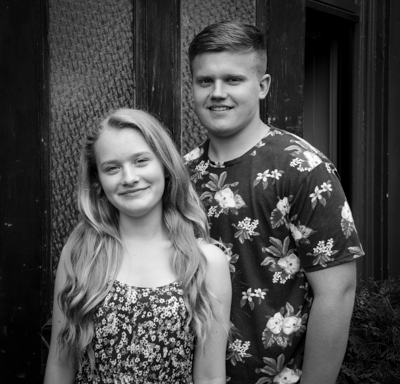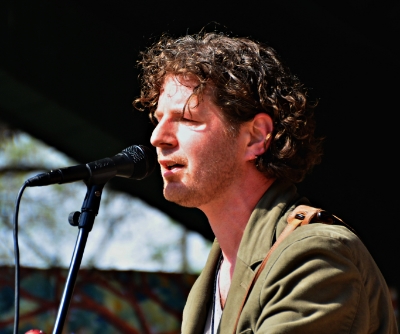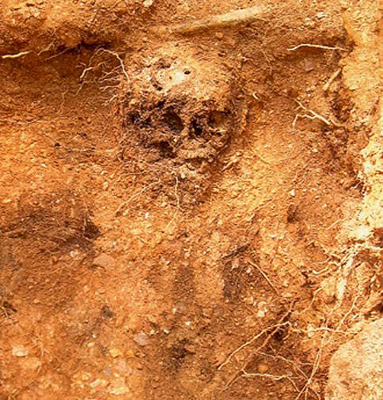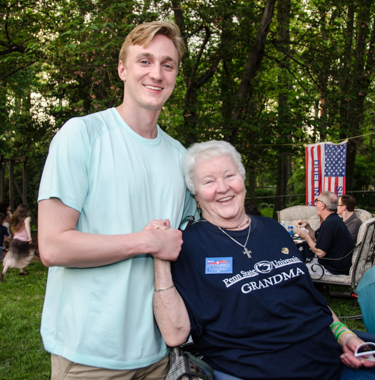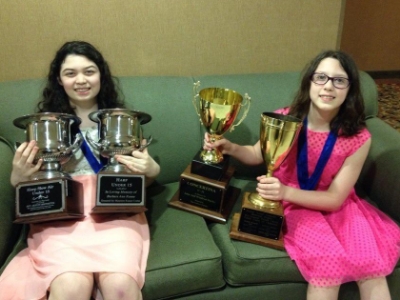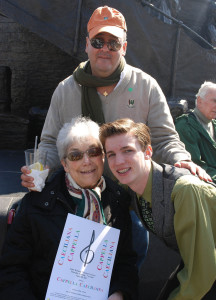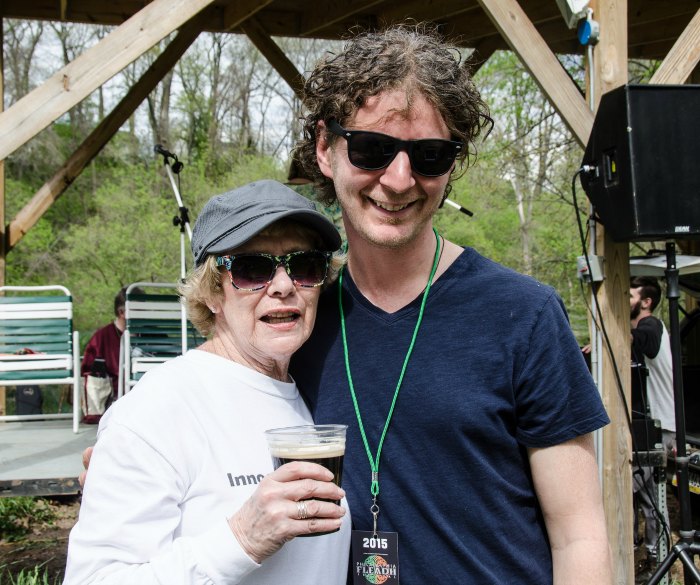When Haley Richardson was five, her mother Donna took her to a concert by Irish fiddler Kevin Burke. At the merch table were local New Jersey fiddler/harper Kathy DeAngelo and her husband, multi-instrumentalist Dennis Gormley, who founded the Next Generation musical group that nurtures local youngsters interested in Irish traditional music.
De Angelo would eventually become Haley’s fiddle teacher and Gormley would teach Haley’s older brother, Dylan, the guitar, but they didn’t know one another at the time. And boy, did DeAngelo ever not know Haley. When the five-year-old told her mother she wanted one of Burke’s “How to Play the Celtic Fiddle” DVDs, Donna Richardson recalled DeAngelo saying, ‘”Oh no, honey, those are for the big people.” Richardson laughs. “I said, ‘well, we’ll take them anyway.’”
It was the beginning of something huge. Haley used the DVD to teach herself Irish-style fiddling as her brother switched from regular guitar playing to the DADGAD tuning of Irish traditional music. They eventually became part of DeAngelo and Gormley’s Next Generation group.
Even if the New Jersey-based Richardson siblings, who just released their first album (he’s 17, she’s 12) Heart on a String, hadn’t become Irish music phenoms, they are living proof that those hours listening to Baby Einstein Mozart CDs aren’t wasted.
Haley graduated from listening to Mozart to playing him on classical violin when she was three. By 2013, at the age of 11, she was all-Ireland champion in 2013 in both under 12 solo fiddle and under 12 fiddle slow airs. She has represented the US in the All-Ireland competition (known as the Fleadh Cheoil) for the past six years. A few weeks ago, she qualified to go again this year. And she’s shared the stage with a variety of major players, including Altan, Dervish, the Chieftains, Paddy Keenan, the Tee-Totallers, Pride of New York, and the John Whelan Band.
Dylan is a multi-instrumentalist (guitar, banjo, Irish bouzouki and mandolin, largely self-taught on most of them) who, though he’s not competitive, has qualified for the All-Irelands in guitar accompaniment.
I met with them this week before the start of the Monday session at Sligo Pub in Media where they regularly play alongside fiddler Paraic Keane (and, occasionally, Paraic’s friends from The Chieftains for whom his father, Sean, is the long-time fiddler, and his uncle, James Keane, a renowned box player).
The CD is something the Richardson siblings have wanted to do for a long time. It was something that one of Haley’s mentors, accordion player John Whelan, has been wanting to do for a long time too. Whelan, himself a multi-All-Ireland winner from London, put out his first CD when he was 14.
The only thing stopping the Richardsons was Haley’s size. Or, more specifically, the size of her fiddle. “I’ve always had smaller violin sizes and they don’t sound as good on a recording,” says Haley. “I’m now using a full size fiddle so we thought it was time.”
Haley created a list of sets (“That’s all her,” Dylan concedes), many of them pieces that she learned from her teacher, Brian Conway of New York, one of the leading Irish fiddlers in the US who was taught the ornate “Sligo style” he teaches Haley from some of the legends of traditional fiddling, including Martin Wynne, Andy McGann, and Martin Mulvihill. She filled in with tunes from two of her favorite composers, Philadelphia’s Ed Reavy and Liz Carroll of Chicago. And she and Dylan wrote two pieces, “The Comet,” and “Into the Frying Pan.” Brian Conway and John Whelan can both be heard on several tracks. Whelan did the recording.
The CD has been critically acclaimed. Typical of the reviews: this one from Paul Keating, columnist for The Irish Voice: “If you weren’t aware that Haley Richardson was still a young child of 12, the maturity of her fiddle playing would give nothing away. In fact, her superb grasp of the essence of Irish music and its vast canon of beautiful melodies has already produced great wonderment at her skills and comfort both in performance and competition. I am in total awe of what she has achieved already at the highest levels at the Fleadh and on many festival and concert stages and look forward to watching her develop further into the ranks of the greatest fiddlers in Irish-American history. Her promise knows no bounds.”
The two will be giving a mini CD-release concert this Saturday at the Irish American Association of North West Jersey at 352 Richard Mine Road, Rockaway, starting at 7:30 PM.
How did a couple of kids who aren’t all that Irish get turned on to Irish music? For Dylan, it was “the liveliness” of the tunes that attracted him. For Haley? “Well, I was really young when I first heard it, but I think it was that it’s different from classical music. In Irish music there are things you can add yourself, your own twists and variations to it. You’re really free to do whatever you want.”
She’s chosen to follow the Sligo fiddle tradition with its lively bounces and rolls which, when done well, sounds almost like it’s improvised. But she still takes lessons in classical violin. “It just kind of helps with the technical stuff,” she says. “I don’t think I would have know as much about Irish music if I didn’t have a classical foundation.”
Both Haley and Dylan are home-schooled by Donna, who is a physical therapist for early intervention. Their dad, Stewart, is a retired corrections officer. Donna started homeschooling when her oldest son. Newt, was struggling in school—not because he was having a hard time learning, but was too far ahead of his classmates. “And they wondered why he was acting out,” she says dryly.
When her two youngest got hooked on music, it turned out to be a great move. “Who knew music was going to take over our lives?” she laughs. Some days she’s on the road for a couple of hours, shuttling them from lessons to sessions to concerts. But they’ve had many opportunities other kids haven’t had.
Both Haley and Dylan worked with author Kathryn Ross on an audiobook recording, Mother Chicken’s Eggs. Haley played fiddle and Dylan actually produced the recording. Now a high school junior, Dylan has his sights set on becoming a sound engineer, so he’ll already have a project on his resume when he applies to college.
Haley thinks she may have found her calling at studio2stage, an Irish music and dance show production program at Keane University in Union, NJ, where they accepted her for the band that plays for the world class Irish dancers who attend even though she doesn’t yet make the age 15 cutoff. “It was a lot of work, they had 12-hour days of rehearsals,” says Donna.
“I was not expecting to like it but I did. I think that’s what I’d like to do,” says Haley.
Given her incredible rise in the field of Irish trad music, it might happen sooner rather than later. And this time, no one is likely to tell her it’s only “for the big people.”

